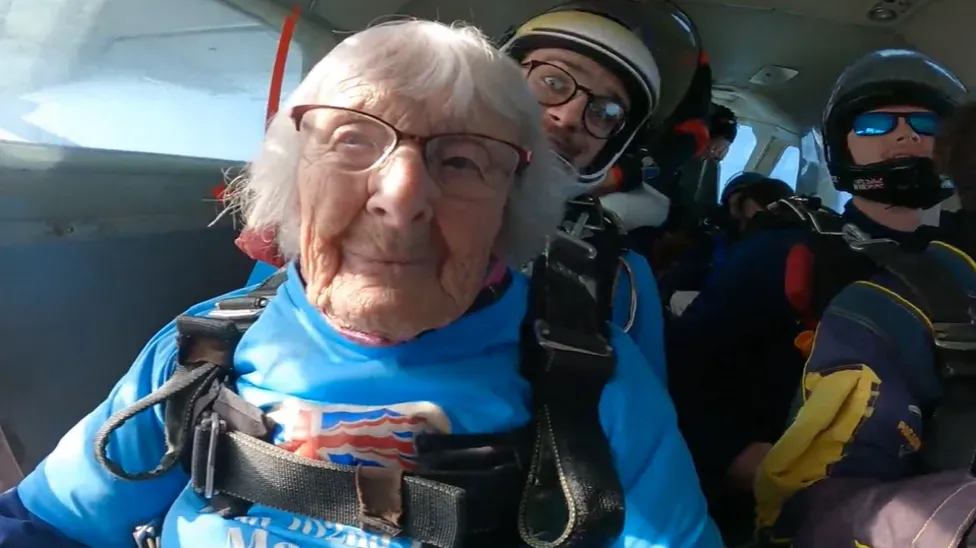The Weekly Wag #1
Skydiving Granny at 102, Remote-Controlled Healing Robots, and Endangered Birds Get Flying Lessons.

Hi I'm Margo! This is my first newsletter for Sunday, which is when I will be sending out my weekly (free) newsletter. Getting you ready and pumped for Monday morning, with a nice happy bedtime sleep on Sundays.
This week, Manette Baillie from Benhall Green in Suffolk became the oldest living human to skydive out of a plane, at 102. What a woman!
"It was a bit scary," she said.
"I must admit I shut my eyes very firmly.
"I just want other people who are getting towards 80 and 90 not to give up anything. Just keep going."

Scientists have developed tiny remotely controlled magnetic nanorobots that can repair brain aneurysms before they burst, preventing life threatening ruptures.

"Our remotely controlled magnetic nanorobots provide a more precise and safer way to quickly seal off cerebral aneurysms without using implants," Zhou told Live Science. "They can also mitigate the painstaking task for surgeons to thread a long and thin microcatheter through complex networks of blood vessels."
The study was published Thursday (Sept. 5) in the journal "Small" - Nanoarchitectonic Engineering of Thermal-Responsive Magnetic Nanorobot Collectives for Intracranial Aneurysm Therapy. Wow, what a barkful!
"We found that the nanorobots could be successfully guided to the aneurysm in a clinical interventional setting and quickly form a stable clot to block it off completely," Zhou said.
During a two-week follow-up period, the three rabbits remained healthy, with stable clots blocking their aneurysms. These clots don't block the brain's blood supply but rather close off the weak spot in the vessel so that it doesn't burst.
Biologists are attempting to help a previously extinct bird, the northern bald ibis, to migrate during Winter seasons using a microlight and some huge cojones.

The northern bald ibis had been extinct in central Europe for 300 years, but now it's making a comeback—thanks to scientists who are guiding them back to their ancient migration routes. Thirty-six of the endangered birds are currently following an ultralight aircraft on a 1,740-mile (2,800 km) journey from Austria to Spain, a trip that may take up to 50 days!
As the birds fly, human "foster parents" sit at the back of the microlight, cheering them on with waves and shouts of encouragement. Biologist Johannes Fritz, who pioneered this method, pilots the small aircraft, which is powered by a fan-like motor and lifted by a yellow parachute.
This is the first time a migratory species is being reintroduced using this approach. "It's almost surreal," says Fritz. "To be up in the sky with these birds, witnessing their perfectly designed bodies in flight—it's a deeply moving and extraordinary experience."
Join me next Sunday for more pawsome news. Don't forget, it's 20% off right now for my Banana annual plan, FOREVER. Use code MARGOLAUNCHDAY when signing up.





